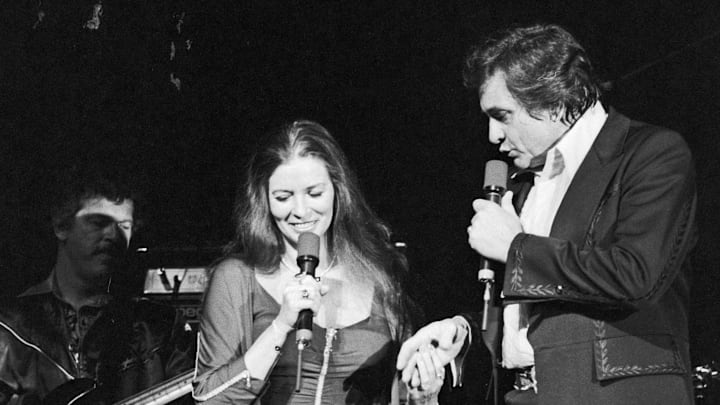Pre-1960s - From roots to rockabilly
Country music came tumbling out of the mountains along with the rise of radio. One hundred years ago, in the 1920s, Vernon Delhart’s “The Wreck of the Old 97” song sold one million copies and Jimmie Rodgers became country music’s first bona fide superstar. We won’t go back quite that far. We’ll jump ahead a couple of decades.
The 1940s saw an extraordinary growth in the musicianship that began embellishing traditional tunes. The piano of Moon Mullican, the guitar of Maybelle Carter, and the vocals of Hacksaw Hawkins – all these and many others were vital to country’s evolution. We’ll begin with an early nod to that tradition before jumping into the 1950s when country music really hit the big time.
“Blue Smoke” by Merle Travis (1946)
If you are a fan of the guitar playing of Mark Knopfler or Derek Trucks, give a listen to Merle Travis. He took the finger-picking style usually associated with the banjo and began applying it to the guitar. He has a ton of sensational guitar songs – “Blue Smoke” just happens to be the one I like the best at the moment. He also has on his resume “16 Tons,” his original country standard that became a massive hit for Tennessee Ernie Ford in the 1950s.
“Your Cheatin’ Heart” by Hank Williams (1952)
I’m going to try and balance the following collection of songs with some well-known standards and some lesser-known gems. Hank Williams would fall into the former category. He remains to this day, more than seventy years after his death, the most influential figure in the history of country music. “Your Cheatin’ Heart” may be his best-known song, becoming a monster hit after his death shortly after its release.
Rather than belabor the obvious, I’ll just point out the following. These songs could have easily been included on my list but are not: “The Night Hank Williams Came to Town” (Johnny Cash), “The Ghost of Hank Williams” (David Allan Coe), “The Great Hank” (Robert Earl Keen), and “Are You Sure Hank Done it This Way” (Waylon Jennings, and countless others). Yep – Hank Williams served as the direct inspiration for more great songs than most other artists ever recorded.
“Can’t Hardly Stand It” by Charlie Feathers (1956)
Charlie Feathers straddles the line between country and rockabilly, the early form of traditional mountain music that began introducing influences from rock & roll into country music. The slinky blues shuffle that infiltrates “Can’t Hardly Stand It” is enlivened by Feathers’ singular delivery with hints of yodeling, in the same way, that Delories O’Riordan would create a new rock vocal style by looking backward and forwards at the same time.
“Cash on the Barrel Head” by the Louvin Brothers (1956)
The Louvin Brothers moved from gospel into the newer brand of country music that was evolving in the wake of Hank Williams’ death in the late 1950s. Their pitch-perfect harmonies combine with the classic steel guitar of Don Helms to create a rollicking honky tonk story about a judge who is not accepting credit today.
“Oh, Lonesome Me” by Don Gibson (1957)
Gibson brought a modern vocal style to classic country and became one of the earliest crossover artists, scoring on both the country and pop charts. “Oh Lonesome Me” would become a standard, covered many times. But no one ever really matched Gibson’s original, bolstered by early collaborator and co-writer Chet Atkins on guitar. It’s a classic country formula – sad lyrics married to upbeat music – the gin and tonic of modern music. The two disparate flavors work together, and modern science can’t, for the life of it, figure out why.
“I Wanna Waltz” by Wanda Jackson (1958)
Like many of the other artists on this list, Wanda Jackson was eclectic. She sang pop and gospel. She could get wild or sentimental. But she was at her absolute best when diving headfirst into rockabilly. She was heavily influenced by Elvis and Buddy Holly, and on her self-titled debut album, she shows off her unique vocal talents. Though several of the songs, including her best-known “Let’s Have a Party,” were pure rockabilly, on “I Wanna Waltz,” she mixes that up-tempo impulse with traditional country for a glorious multiple personality number.
